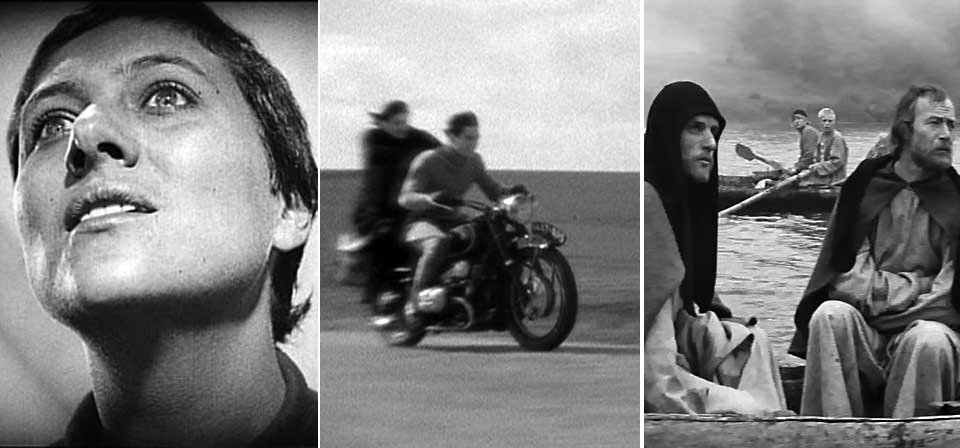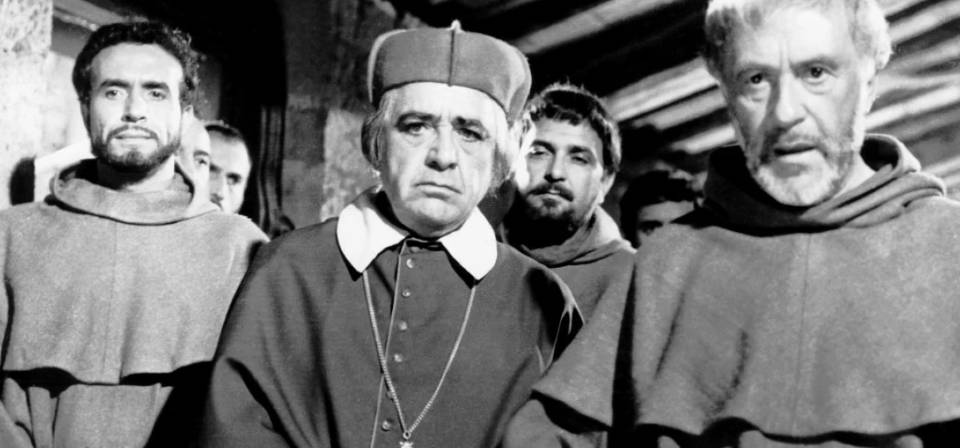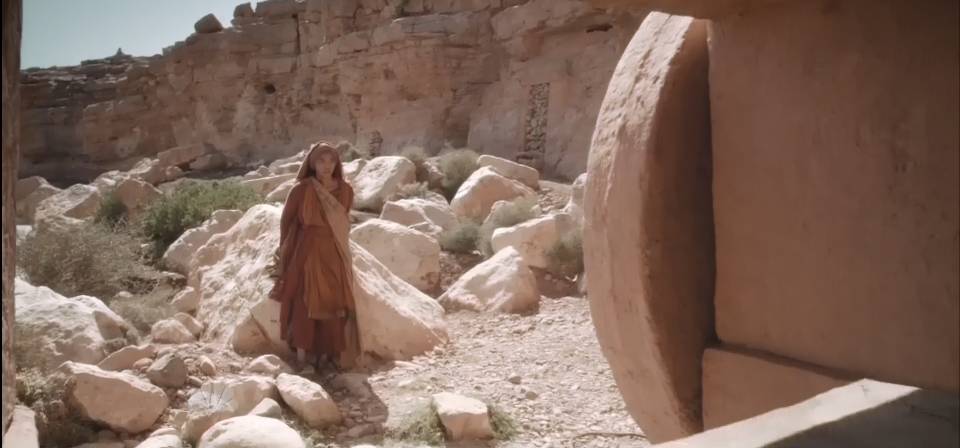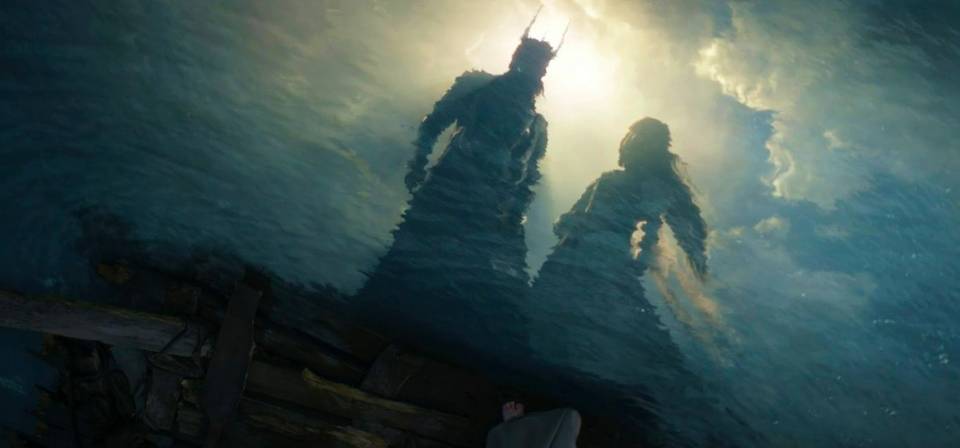Search Results
94 records found

Religious filmmakers explore — and cross-examine — faith
Strikingly, where the religious films of nonbelievers often feature idealized religious characters more or less certain in their faith, films by believers often put their religious characters’ faith to a more existential test.
Religious Vision: Les Misérables and Anna Karenina
Have today’s movies lost religion? Not necessarily — but sometimes it helps to know where to look. For instance, mainstream films are more likely to include sympathetic depictions of religious faith in period pieces than in stories set in the present day.

The Reluctant Saint: Joseph of Cupertino (1962)
Like its protagonist, Saint Joseph Desa of Cupertino, throughout much of his lifetime and most of the film, Edward Dmytryk’s 1962 film The Reluctant Saint is a modest affair that has attracted little attention, but has more to offer than meets the eye.
Remembering Bob Hope
Seven years ago, after nearly six decades of marriage to an active Roman Catholic, Bob Hope was received into the Catholic Church, and became a frequent communicant. His funeral Mass was celebrated on July 30 at St. Charles Borromeo Catholic Church in North Hollywood, and on Sunday, August 3, he was remembered at a memorial Mass celebrated by Cardinal Theodore McCarrick of Washington, D.C. at the National Shrine of the Immaculate Conception.

Resurrection (2021)
The Bible world of Roma Downey and Mark Burnett’s LightWorkers Media productions sometimes seems not unlike a movie about Shakespeare in which you hear lines like “To be or not to be, that is the question” and “All the world’s a stage, and all the men and women merely players,” but everyone seems to have heard them already.
The Return (2003)
Echoes of Abraham and Isaac, the Gospel parables about fathers and pairs of sons, and the Second Coming run through a stark tale of an inscrutable, harsh stranger whose unexpected reappearance in the lives of his two sons is as unexplained as his disappearance so many years earlier. Our first glimpse of the nameless father (Vladimir Garin) lying in bed overtly recalls Mantegna’s Lamentation Over the Dead Christ — yet this man is anything but Christlike in his treatment of his newfound sons.
Return From Witch Mountain (1978)
Better structured and faster-moving than its predecessor, the sequel has more energy and wit in one sequence — the gold theft at the museum, in which a rolling stagecoach and floating manniquins evoke scenes from a Western — than all the special effects in the first movie combined.
The Return of Decent Films Mail
Too long neglected, Decent Films Mail returns today with two new columns, Mailbag #16 and Mailbag #17. (For the benefit of RSS subscribers, at this writing it looks like the RSS feed hasn’t yet picked up on them. This looks like a glitch; I’ll look into it.)
The Return of Decent Films Mail!
At last, after a hiatus of over a year, Decent Films Mail is back!
The Return of the King (1980)
The film hits the most critical plot points, but is clearly aimed at the younger set, with little to interest even the most avid adult Tolkien and/or animation buff. Unfortunately, this style works even less well here than in The Hobbit, which really is a children’s story. Tolkien’s Lord of the Rings is a much more adult work, but Rankin-Bass essentially makes a kid movie out of it. Even so, for kids too young for the Jackson or even Bakshi versions, the Rankin-Bass cartoons might be just the ticket.
Return to Me (2000)
The pious, folksy Irish and Italian Catholicism of Carroll O’Connor and his cronies isn’t there for the sake of either mockery or preachiness, but is simply taken for granted, just as it might have been in a film of this sort from fifty years ago, when they still made them. The story also takes for granted (indeed, depends upon) the fact that the hero and the heroine manage to fall in love and grow together without taking their clothes off.
Return to Never Land (2002)
Return to Never Land is Peter Pan Lite, if I can say that without conjuring images of low-fat peanut butter.
Review Haiku Riddles!
A couple of days ago over at the Arts & Faith message board, for reasons I won’t recount, someone started a thread called “Review Haiku,” dedicated to three-line, 17-syllable movie reviews. Merriment ensued.
![The Rider [video]](/uploads/articles/rider.jpeg)
The Rider [video] (2018)
The lead actor in this film told me he feels much closer to God in the South Dakota Badlands than in New York or Paris. There were more theologically explicit films this year, but none that brought God closer to me.
Riding Alone for Thousands of Miles (2005)
The themes are timeless and humane, and if the film isn’t always entirely persuasive, it earns enough viewer goodwill to make up the difference. Funny, visually sumptuous, and bittersweet, Riding Alone movingly suggests that it’s better not to.
Ridley Scott’s Robin Hood and Hollywood Revisionism
The last really solid Hollywood take on the traditional Robin Hood mythos (not counting the Kevin Costner folly, because, well, it doesn’t count) was over 70 years ago, and is essentially the only one in its class (unless you want to go back to the silent era). A revisionist take on Robin Hood would be one thing if the traditionally heroic Robin Hood could be taken for granted as a cultural reference point. What have we come to if we can only view a legendary icon like Robin Hood through skeptical, revisionist lenses?

The Rings of Power at the end of season 1
Season 1 ended for me closer to the quiet end of the whimper-bang spectrum than I had hoped. Yet the highs of the season’s second half offer ongoing reason for sustained interest.

The Rings of Power: Season 1 at the halfway mark
Four episodes in, the lavish Amazon Prime series is delivering on at least some of its promise, but there’s room for improvement.
Rio (2011)
From the arches of the Carioca Aqueduct to Sugarloaf Mountain, from the flamboyant costumes of the samba schools to the sundrenched beaches of Guanabara Bay, Rio is as colorful a look at a faraway world as kids are likely to get without reading subtitles.
Rio [video]
Fasten your seat belts … I think this is the fastest talking I’ve done in any of these reviews!
Recent
- Benoit Blanc goes to church: Mysteries and faith in Wake Up Dead Man
- Are there too many Jesus movies?
- Antidote to the digital revolution: Carlo Acutis: Roadmap to Reality
- “Not I, But God”: Interview with Carlo Acutis: Roadmap to Reality director Tim Moriarty
- Gunn’s Superman is silly and sincere, and that’s good. It could be smarter.
Home Video
Copyright © 2000– Steven D. Greydanus. All rights reserved.